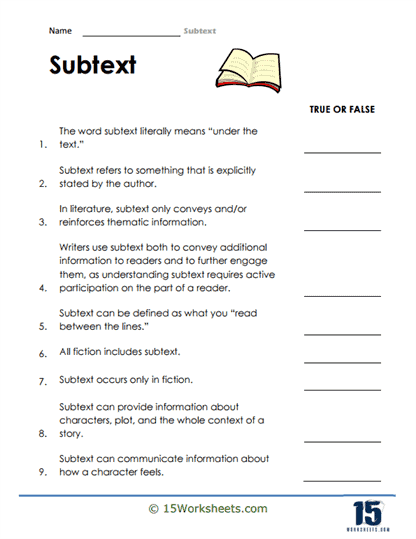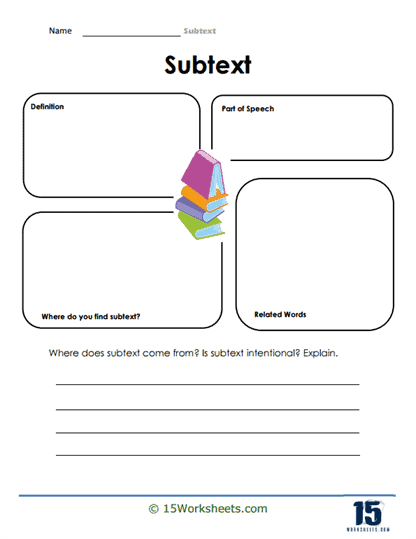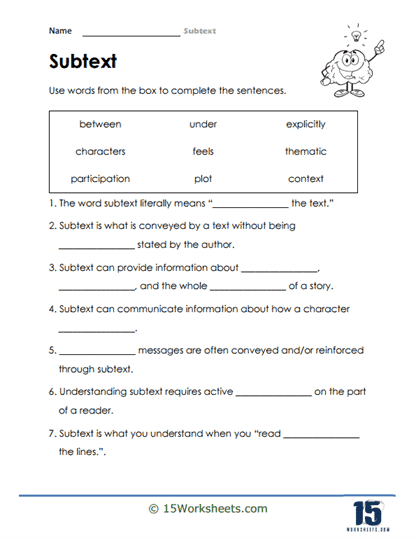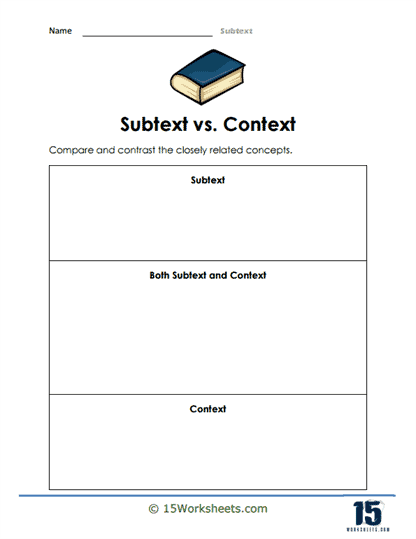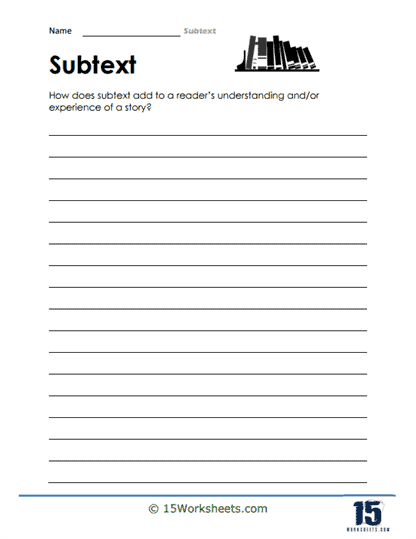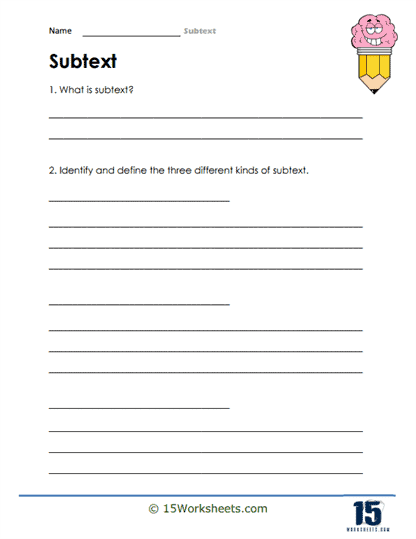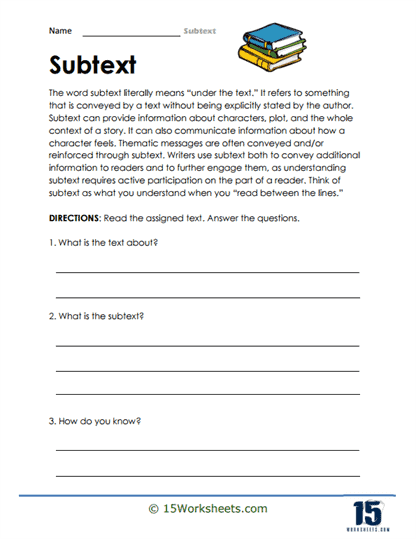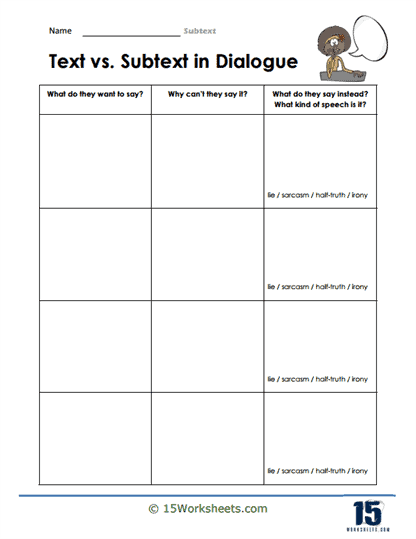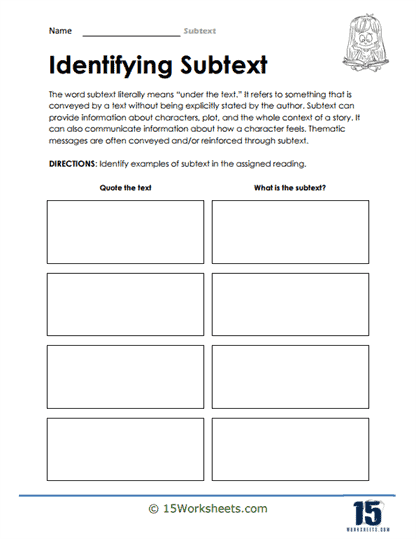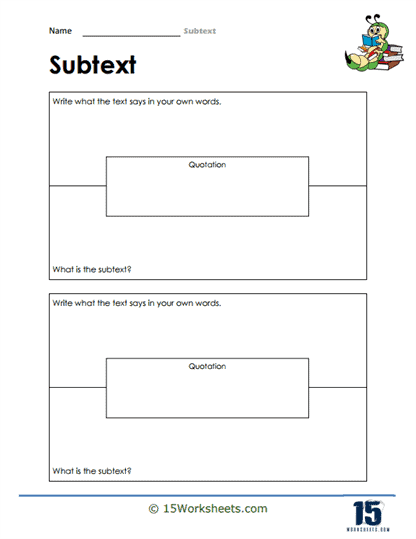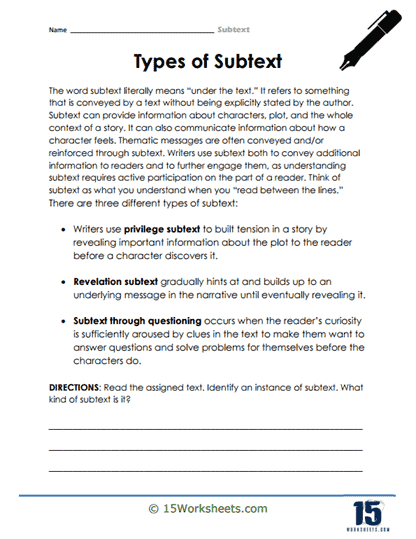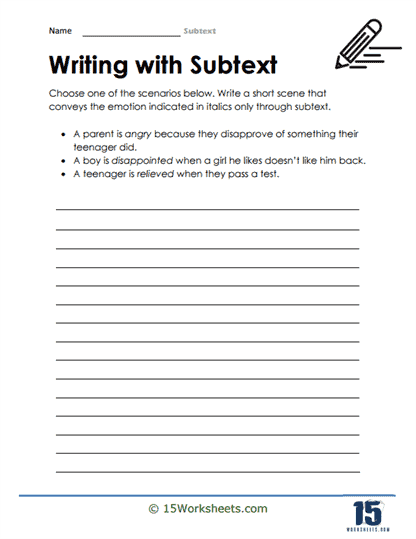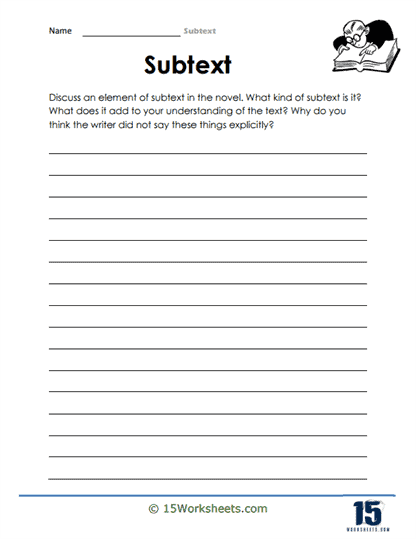Subtext Worksheets
All About These 15 Worksheets
Welcome to the Subtext worksheet collection, specially curated to assist students in delving into the intriguing world of subtext in literature. These 15 thought-provoking worksheets are designed to nurture critical thinking and encourage students to uncover the hidden layers of meaning beneath the surface of texts.
Each worksheet offers a variety of engaging activities that prompt students to analyze subtext in diverse literary works. Some of the activities featured in these worksheets include:
- Identifying Subtle Clues – Students will learn to recognize subtle cues and hints in texts that reveal deeper meanings or emotions.
- Discover Types of Subtexts – Students will explore the different types of subtexts that decipher underlying emotions and intentions.
- Analyzing Symbolism – Students will delve into symbolic elements to uncover the hidden messages they convey.
- Unraveling Theme Implications – Students will reflect on themes to discern their implicit implications.
- Crafting Subtext – Students will practice writing subtext in their own narratives to enhance storytelling.
By engaging with these worksheets, students will develop a keen eye for subtext, enhancing their comprehension and critical analysis skills. They will discover that subtext adds richness and complexity to literature, enabling them to appreciate the deeper layers of meaning in the stories they encounter.
Unlock the power of subtext and embark on an exciting journey of literary exploration with this Subtext worksheet collection!
What Is Subtext in Writing?
Subtext is the meaning that is underneath the dialogue. It tells you what the speaker meant when they said something, even if they didn’t say it directly. As humans, we don’t often speak our minds. We cannot articulate our thoughts the way we want them to, which is where subtext can help.
We think on our feet as we talk to someone. We process other stimuli, like a person’s body language, and then struggle with our own emotions and those of the person listening to us. When a writer is writing a fictional story, this layer of intentional miscommunication adds authenticity, creates a dramatic situation, and may also reveal the deeper truths about a character’s personality.
How Can I Write Subtext?
You’ll have to start with a character who’s in conflict. If the characters of your story are genuinely content with their lives and there’s nothing that can interrupt their happiness, then there’s going to be no need for conflict or subtext. You’ll have to start with an intense scene. It could perhaps be about a character trying to get something but has to face bottlenecks along the way.
Once you have this scene, think about how you can elevate the stakes to create subtext. Next, you’re going to create action and dialogue that will indirectly express your character’s needs, messages, and emotions.
Ways to Build Subtext
Once you have a character in your story that is in conflict, you’ll have to consider how you’ll be able to communicate a nuanced idea using emotion, context, or the message. Think of every component and then think of a different way of communicating these elements.
Let’s consider an example. A couple is bringing up an old argument about the decision to have children.
The Context
The apartment is the context in this example. Do you think this is the best setting for this conversation? Would moving to a more public location change what they say?
You could also complicate this argument by changing the room’s conditions: an air-conditioning unit breaking down, perhaps. Any of these details can change the subtext of the scene.
The Message
If the woman is directly saying that she wants a baby, you may want to list the different ways that she could beat around the bush. You could perhaps use a keyword.
The Emotion
The woman in our scene is going to be frustrated and sad. Instead of saying, “I want to be a mother,” you’ll have to think of ways that she can show what she feels. What will she notice a lot more if she wants a baby? How will these needs change the way she behaves?
Are you intending on bringing other emotions into the scene? What is the man feeling, and is he willing to do something about it?
The Need
The woman, in this scene, needs to know if she was successful in changing the man’s mind without scaring him out of the relationship. Knowing the woman’s needs is vital since it can change how the two parties engage in a conversation.
Remember, subtext can help you communicate a scene better, but you may not need it in every scene. However, it will enrich your scenes in many ways.

